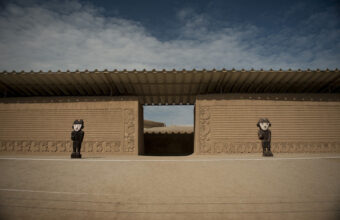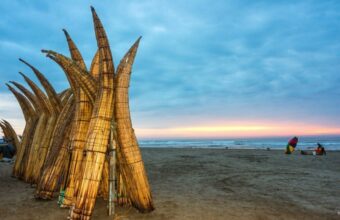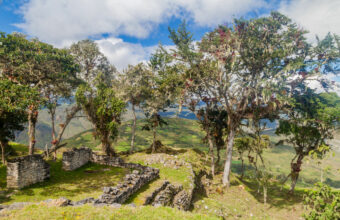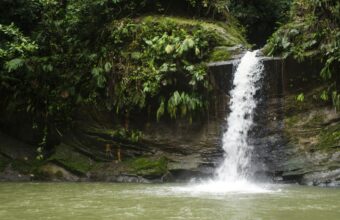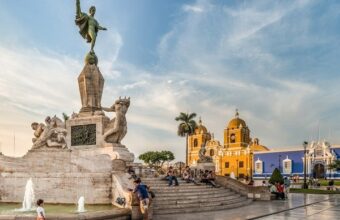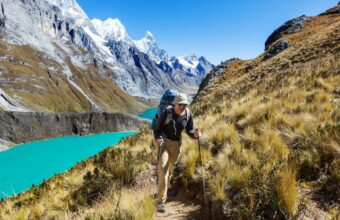How To Get To Kuélap
The Chachapoyas' cloudforest citadel
This much is indisputable: Kuélap is hands down the greatest architectural marvel in northern Peru. After that, things get a bit hazy.
Constructed by the Chachapoyas people, a formidable and mysterious pre-Inca civilisation who referred to themselves as ‘Warriors of the Cloud’, Kuélap was probably first settled sometime in the fifth or sixth century AD and gradually built up over almost a millennium.
Current scholarly opinion posits it took on its present form sometime in the 1000s, remaining inhabited well into the 1500s. But as with all things Chachapoya, these dates are tentative at best.
For such a grand monument, Kuélap sees surprisingly few visitors. Those who do make the trek to the cloud forest are rewarded with some of the most spectacular pre-Columbian ruins in the continent.
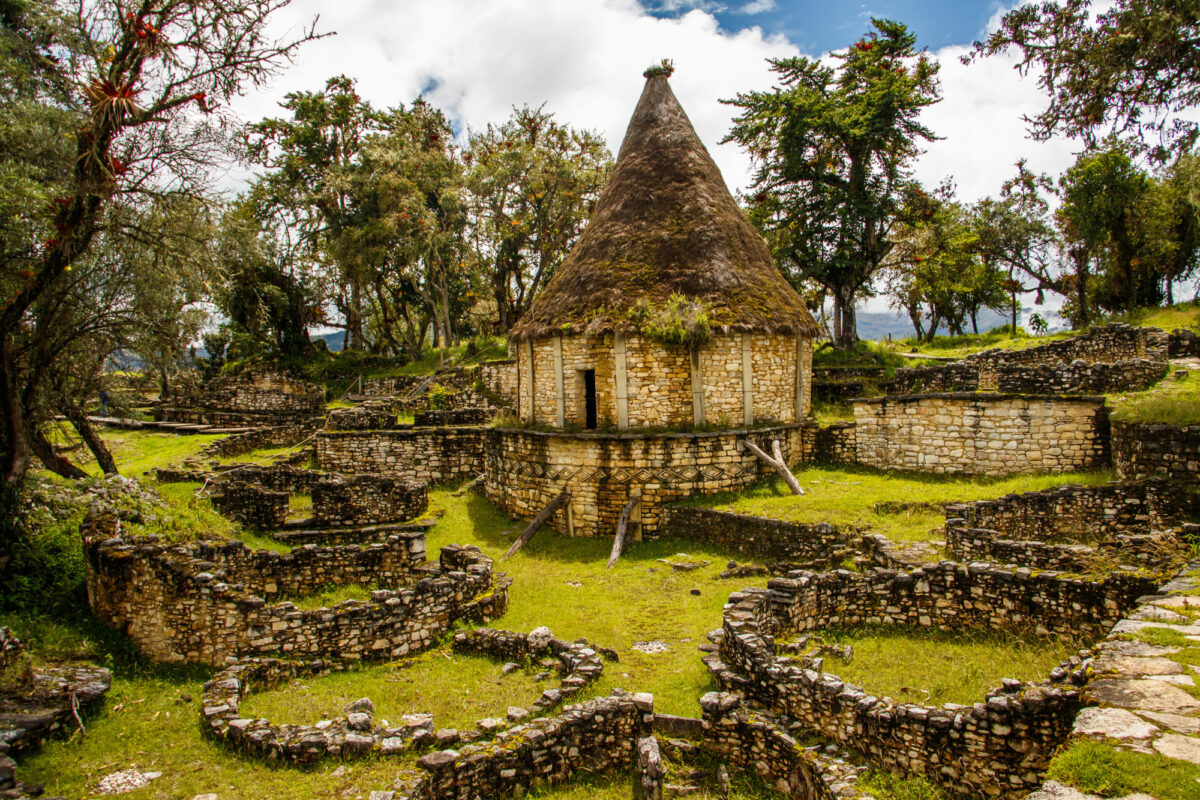
Kuélap, the highlight of northern Peru
Visiting Kuélap
Kuélap consists of some 16 acres of ruins atop a steep mountain ledge in what Peruvians call the ceja de la selva (eyebrow of the jungle) — the eastern side of the Andes that faces the Amazon. This means it’s surrounded by cloud forest, and on the many days in the region when it’s rainy, you’ll look down from the mountaintop on an abyss of fog.
The citadel itself is imposing at first glance: towering walls of yellowish sandstone loom up out of the mist. Inside, however, most of the site is in ruins, composed mainly of the foundations of the 400-plus circular dwellings that once housed the inhabitants of this walled city.
The site
To visualise Kuélap’s layout, imagine a huge aircraft carrier topped with an oblong superstructure, with the ship’s bow pointed due north. The ‘deck’ of the carrier is the so-called Pueblo Bajo or Low Town, the residential district where the Chachapoya actually lived, while the ‘superstructure’ is the Pueblo Alto or High Town, an elevated precinct perched atop a 36-foot wall and crowned by a tower known as El Torreón.
The function of the Pueblo Alto is not altogether clear: some archaeologists argue it answered to purposes of defence, while others have proposed it was purely ceremonial. Regardless, most of what you’ll see in Pueblo Bajo are the remains of the city’s circular houses, liberally interspersed with trees weighed down with shaggy epiphytes.
Key features
Key features to look out for include:
El Tintero: This inverted-cone structure is considered by many to have been the citadel’s Grand Temple. One hypothesis is that it was used for animal or even human sacrifices — an underground pit beneath it was discovered to be full of bones.
El Torreón: Situated at the northernmost tip of the complex, this tower probably served as a lookout point, though it may have had a ritual function as well. At some 23 feet tall, it’s the loftiest of Kuélap’s structures.
Circular platform: Near El Tintero is a rounded platform where a huge ossuary has been unearthed. Damage to the stones indicates it was the site of a massacre and subsequent fire, possibly as a result of a power struggle among the Chachapoya sometime around 1570.
Relief carvings: On countless walls throughout the complex you’ll find bas-relief carvings of birds, lizards and human faces. For many scholars, they testify to the influence of Amazonian culture on Chachapoya art and mythology.
The history of Kuélap
As with Machu Picchu, Kuélap’s purpose is still being debated. That the citadel served some sort of defensive function seems undeniable, given its remote location, 60-foot walls and narrow, single-file entryways. Some archaeologists have also highlighted the complex’s use as both a warehouse and a sacred site. Numerous buildings were clearly used to store foodstuffs against periods of scarcity caused by the El Niño phenomenon, and crowded grave sites have been found all over the compound, including inside the walls — indicating the Chachapoya would routinely bring their dead here for burial.
None of this detracts from the fortress hypothesis; ancient Andean structures routinely served many purposes.
Chachapoya culture
Studies of Chachapoya civilisation are in their infancy, but the culture appears to have flourished between roughly 900 and 1570 AD, when it was vanquished by the Spanish. Its people occupied a swath of Peru’s northeastern Andes around the Utcubamba and Marañón rivers, which were used to trade with the Amazon and the coast. Descendants of the Chachapoyas still exist today, as evidenced by the several towns bearing their name in different parts of Peru.
The Chachapoyas’ reputation was a fearsome one: they were known as bellicose warriors, herbalists, and sorcerers. Possibly this stemmed from their independent spirit, which impelled them to struggle fiercely against the Inca, even after the latter subjugated them in the 1470s.
The structures the Chachapoya built were heavily influenced by the nature around them — indeed, they could even be described as environmentalists. They took advantage of their local environment when building their structures, perhaps inspired by their veneration of powerful animals like serpents, condors and pumas.
The Chachapoyas’ unusual culture can be seen in their mausoleums, which are often worked into cliff faces more than 1,000 feet off the ground and contain tightly bundled mummies and eerie sarcophagi, such as those of Karajía to the north. Intriguingly, the Chachapoya appear to have enjoyed a lifestyle that was highly egalitarian: no evidence of social hierarchies has ever been found, either in their architecture or in their burial sites.

How to get to Kuélap
Half a day is sufficient to tour the site. Monumental as the architecture is, only hardcore archaeology buffs will feel the need to spend more than four or five hours seeing it.
Unfortunately, visitor information at Kuélap is lacking. There are basic signs, in English and Spanish, but no museum. Guides hang around the ticket booth, offering their services, but you never know beforehand what you’re getting. It might be best to hire one back in Chachapoyas.
Kuélap is now easier to get to than ever, owing to the Peruvian government’s new Telecabinas transport system. Opened in 2017, this comfortable ski-lift whisks visitors up from outside the village of Nuevo Tingo to a platform that’s just under a mile from the citadel. From there, a moderately steep stairway leads to the ruins.

